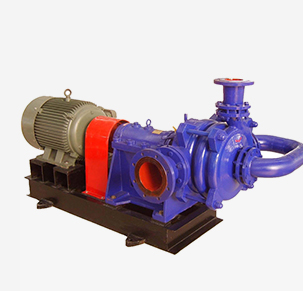Hindi
- Afrikaans
- Albanian
- Amharic
- Arabic
- Armenian
- Azerbaijani
- Basque
- Belarusian
- Bengali
- Bosnian
- Bulgarian
- Catalan
- Cebuano
- Corsican
- Croatian
- Czech
- Danish
- Dutch
- English
- Esperanto
- Estonian
- Finnish
- French
- Frisian
- Galician
- Georgian
- German
- Greek
- Gujarati
- Haitian Creole
- hausa
- hawaiian
- Hebrew
- Hindi
- Miao
- Hungarian
- Icelandic
- igbo
- Indonesian
- irish
- Italian
- Japanese
- Javanese
- Kannada
- kazakh
- Khmer
- Rwandese
- Korean
- Kurdish
- Kyrgyz
- Lao
- Latin
- Latvian
- Lithuanian
- Luxembourgish
- Macedonian
- Malgashi
- Malay
- Malayalam
- Maltese
- Maori
- Marathi
- Mongolian
- Myanmar
- Nepali
- Norwegian
- Norwegian
- Occitan
- Pashto
- Persian
- Polish
- Portuguese
- Punjabi
- Romanian
- Russian
- Samoan
- Scottish Gaelic
- Serbian
- Sesotho
- Shona
- Sindhi
- Sinhala
- Slovak
- Slovenian
- Somali
- Spanish
- Sundanese
- Swahili
- Swedish
- Tagalog
- Tajik
- Tamil
- Tatar
- Telugu
- Thai
- Turkish
- Turkmen
- Ukrainian
- Urdu
- Uighur
- Uzbek
- Vietnamese
- Welsh
- Bantu
- Yiddish
- Yoruba
- Zulu
Telephone: +86 13120555503
Email: frank@cypump.com
नवम्बर . 24, 2024 12:29 Back to list
Guidelines for Replacing Your Septic Pump Efficiently and Cost-Effectively
Septic Pump Replacement A Comprehensive Guide
Septic systems play a crucial role in managing wastewater for homes that are not connected to a municipal sewage system. At the core of these systems lies the septic pump, an essential component responsible for moving wastewater from the septic tank to the drain field. Like any mechanical device, septic pumps can fail or wear out over time, necessitating a pump replacement. In this article, we will explore the signs that indicate a need for pump replacement, the process involved, and the key considerations to keep in mind.
Signs That You Need a Septic Pump Replacement
Understanding when to replace your septic pump is vital for maintaining the health of your septic system. Here are some common signs that indicate you may need a replacement
1. Frequent Pump Failures If you find yourself replacing the pump more than once in a short period, it may be time to investigate the underlying issues.
2. Continuous Running A septic pump that runs continuously or cycles on and off frequently is not functioning correctly. This could indicate a malfunctioning float switch or a blockage in the system.
3. Slow Draining If sinks, toilets, or tubs are draining slowly, it may signal a clog or an issue with the pump itself.
4. Odor Foul odors around your property may indicate a sewage backup or an overburdened septic system, signaling that your pump may not be doing its job.
5. Water Backup If you're experiencing sewage backups in your home or yard, this is one of the clearest signs that your septic pump is failing and needs immediate attention.
The Replacement Process
Replacing a septic pump involves several steps, which require careful consideration and, oftentimes, professional assistance
septic pump replacement

1. Assessment A professional will assess your current system, including the type of pump and its condition, to determine the appropriate replacement.
2. Choosing the Right Pump Not all septic pumps are created equal. Homeowners must choose a replacement pump that fits their system’s size and specifications. Factors to consider include horsepower, sump or effluent type, and durability.
3. Installation Septic pump installation typically involves removing the old pump, preparing the area for the new unit, and connecting it to the electrical and plumbing systems. Ensuring that the installation is done correctly is essential to avoid future issues.
4. Testing After installation, the pump should be tested to ensure it operates efficiently. This step is crucial to confirm that the system is running as it should.
Key Considerations
When preparing for a septic pump replacement, keep the following considerations in mind
- Hire a Professional While some homeowners may be tempted to tackle pump replacement as a DIY project, hiring a licensed septic service professional is advisable. They have the knowledge, experience, and tools to perform the replacement safely and correctly.
- Maintenance Regular maintenance can extend the life of your septic pump. Schedule regular inspections and pump-outs to keep your system functioning smoothly.
- Local Regulations Be aware of local regulations regarding septic systems. Some areas may have specific codes or guidelines that must be followed during installation.
In conclusion, ensuring the health of your septic system through timely pump replacement is vital for the functionality of your home’s wastewater management. By recognizing the signs of pump failure, understanding the replacement process, and keeping key considerations in mind, homeowners can maintain a well-functioning septic system and avoid costly repairs in the long run.
-
Heavy-Duty Mining Sludge Pumps - Wear-Resistant Slurry Handling
NewsAug.02,2025
-
Horizontal Split Case Pump with GPT-4 Turbo | High Efficiency
NewsAug.01,2025
-
ISG Series Pipeline Pump - Chi Yuan Pumps | High Efficiency, Durable Design
NewsAug.01,2025
-
Advanced Flue Gas Desulfurization Pump with GPT-4 Turbo | Durable & Efficient
NewsJul.31,2025
-
ISG Series Vertical Pipeline Pump - Chi Yuan Pumps | Advanced Hydraulic Design&Durable Construction
NewsJul.31,2025
-
ISG Series Vertical Pipeline Pump - Chi Yuan Pumps | Energy Efficient & Low Noise
NewsJul.31,2025










